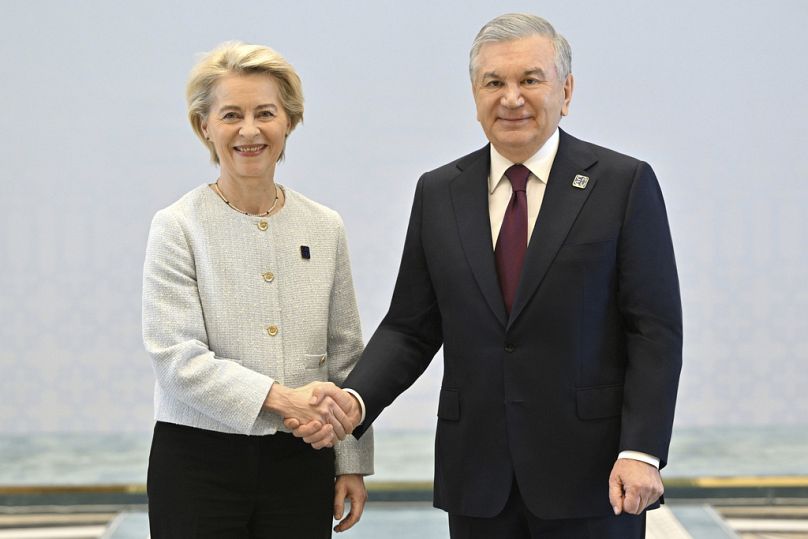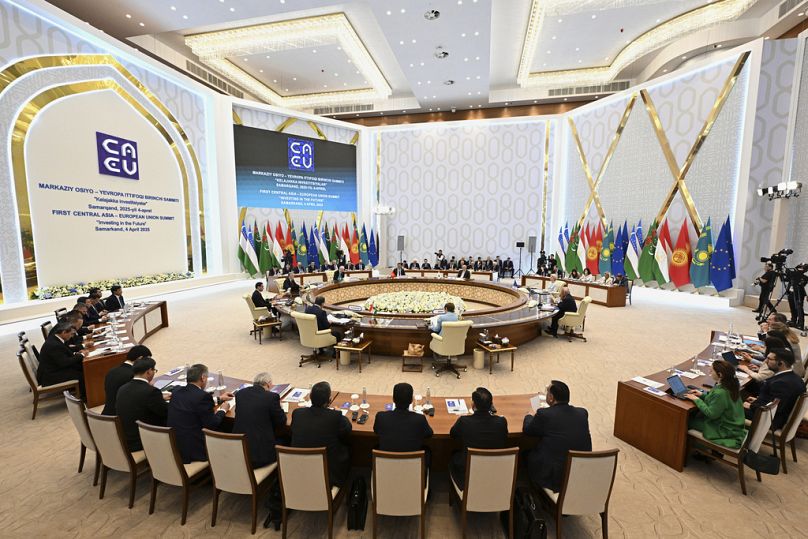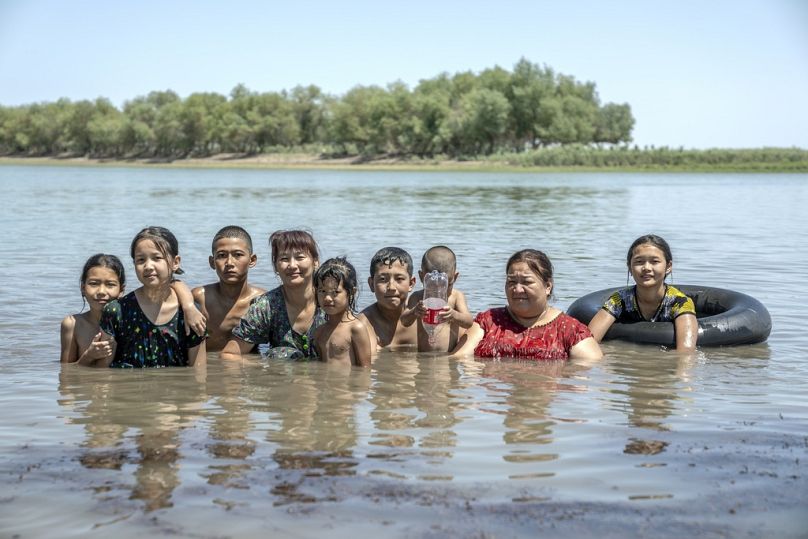Experts at the Samarkand Climate Forum warn central Asia is getting warmer year after year
Fertile lands are rapidly decreasing while the Central Asian region’s population is growing, and in 25 years from now, it can surpass 100 million people, Uzbekistan's president warned at the Samarkand Climate Forum.
Central Asia is getting warmer year after year, running out of water and, consequently, food, delegates at the Samarkand Climate Forum have been told.
The Climate Forum, a regular annual event, was a follow-up to the Central Asia-European Union Summit, which elevated the cooperation between the EU and Central Asia regions to the strategic level.
The participants were of the highest level: presidents of five Central Asian countries and the presidents of the European Council and European Commission.
Having already discussed cooperation and investment in green transition and water management in the previous event, the speakers focused on concrete projects of saving Central Asia from becoming a desert.
Opening the forum, the host, President of Uzbekistan Shavkat Mirziyoyev, defined the problem Central Asia faces in very clear terms.
“Climate change is inextricably linked to food and energy security. Fertile lands are rapidly decreasing while the region’s population is growing, and in 25 years from now, it can surpass 100 million people. Today, over 20 percent of the land in the region is exposed to degradation. In a quarter of a century, crop yields may decrease by a third.”
Central Asia cooperating with the EU
However critical the threat, experts note that cooperation with the European Union and its long-running food safety and innovation programs will increase the odds in the fight against the climate disaster.
“I believe it is vital for us to combine our scientific potential to increase the adaptation capacity of our forestry and agrarian sectors, as well as strengthen food security as part of the HORIZON EUROPE Program,” Uzbekistan's president said. Shavkat Mirziyoyev said.
The leaders of the EU, President of the European Council Antonio Costa and the President of the European Commission Ursula von der Leyen, not only agreed but also reaffirmed the EU's commitment, pointing out that the EU is already heavily involved in tackling climate-induced problems of Central Asia.
“Today, Central Asia and Europe have agreed to enter a new strategic partnership. Climate security and the protection of our nature will have a central place in this strategic partnership. First, Europe wants to work alongside you in adapting to a changing climate," EU Commission President Ursula von der Leyen said.
Second, together we can also speed up the global transition to clean energy. Last year, Uzbekistan, Tajikistan, and Kyrgyzstan joined our global pledge to double energy efficiency and triple renewable energy capacity by 2030,” von der Leyen added.
For his part, EU council president, Antonio Costa, said, “Today, together with the president of the European Commission, Ursula Von Der Leyen, we reaffirm our commitment to elevating the Central Asia-European Union relations to a strategic partnership".
"A strategic partnership that will pool European resources, expertise, and technology in favour of a deeper cooperation with Central Asia on climate action, water management, energy security, green development, and sustainability. This is the way forward. This must be a central part of our common future.”
Fighting climate change in Central Asia
The European Union is already fighting the effects of climate change through development projects in the region.
For instance, the EU is creating a new green belt in the Aral Sea basin, bringing life back to what is now a salty desert. And this is helping Central Asia's farmers adapt to a drier climate, using technology to save water and monitor its usage.
This is the same transition that many farmers in the European Union are also going through. Those same European farmers are now exploring innovative solutions, for instance, by using our satellites to monitor the soil and adopting new genomic techniques with climate change-resistant plants.
On a more industrial level, the EU is investing in clean energy across this region, including the record-breaking Rogun dam in Tajikistan and the Kambarata dam in Kyrgyzstan. They will generate enough energy not only for their two countries but also to export across Central Asia.
“They will power up new strategic industries, for instance, to process raw materials. They will help electrify our transport corridors—we have been discussing this today—and produce clean hydrogen that could be sold abroad.
This is truly of mutual benefit. It is good for our energy independence, it is good for our trade, and of course it is good for our common planet, for climate and the protection of our nature”, von der Leyen said.
The leaders of Uzbekistan, Kazakhstan, Tajikistan, Kyrgyzstan, and Turkmenistan listed the projects and ideas that may benefit from the increased funding and know-how transfer.
They ranged from creating a regional water usage strategy to planting millions of trees to fight desertification (something that Uzbekistan is already doing).
A number of meetings were held with different stakeholders, some of them warning that the alarm bells rang out too late but most of them leaving hopeful.
“The most important thing to see was the commitment of all the countries and collaboration with the EU.
The presence of the heads of states and the presence of the leadership of the EU and the development banks is critical.
It is the evidence that the stakeholders are ready to act and are ready to collaborate”, said Anacláudia Rossbach, the executive director of UN-Habitat.
There are few places more appropriate for a venue of an environmental awareness event than the Aral Sea.
It is a harrowing example of what people can do to the very places they live in. Once the fourth-largest lake on the planet, this lush water world spans across 68,000 square kilometers.
Fed by the Syr Darya and Amu Darya rivers, it was not only the habitat of dozens of species of wildlife but also supported local fishermen who were able to catch 60,000 tons of fish every year. Then, in 1960, the Soviet Union decided to turn the region into a cotton-growing hub.
Watering as much as 7 million hectares of fields took a lot of water from the two rivers, and the Aral Sea began to recede. Both cotton and the Soviet Union are now part of history, but the agricultural land is still expanding, and the sea is drying out.
Compared to its old self, it is now a pond of just 8,000 square kilometers with salinity so high that it has become nearly devoid of life. The whole region suffers from a lack of water, with resources decreasing steadily.
As recently as five years ago, there were armed conflicts between some of the countries in the region over single wells or rivulets.
At the Samarkand Climate Forum, they were sitting together, hosting EU leaders and discussing joint projects to avert the disaster.



댓글
댓글 쓰기